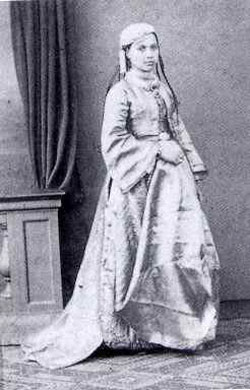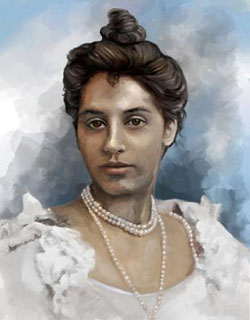Maharaja Ranjit Singh Family Tree
Does anyone have like a family tree, from an article i belive Maharaja Dalip Singh had no children as the queen had them killed to try and finish th Raj.
so thats prob partially true as Princess Bama Survived. whos the decendent now???
Dalip Singh had around 5 or 6 children and all died by natural cause. I believe these peoples are the far distant relatives of Maharaja Ranjit singh.. (like from Ranjit Singh's brother family great great great children and so on)..
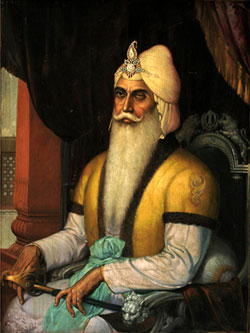
All of Maharaja Ranjit Singhs children died because when Guru Gobind Singh Ji was about to accend to sachkhand in nanded he said "whoever erects a shrine in my honor, his offspring shall perish" and so it was true and there was no one to take over the raj ecept for Maharaja Dalip Singh, who was already "britishized" and was exiled once for converting [i think].
first thing i herd it before but as sikhs do we belive in saraps, curses, etc i thought ikhi does not belive in magic, curses, etc then why would Guru Gobind Singh set a curse.
in a new book launched in uk on Dalip Singh a report on the book in the sikh times said that the queen inspired to have all of his children killed to insure the end of the raj.
Shouldn't a siropa only be given to one who has done an honourable deed? I do not agree with honouring a person based on their connection to a famous ancestor. It devalues the notion of a siropa.
all the descendants of the Maharaja died. they granddaughters had no children from what i know.
say why did Guru ji say if anyone touches Hazur Sahib (like Raja Ranjit Singh did, by making a gurdwara), why did he curse the person. isnt making gurdwaras a noble thing? and why did he say you have to come here before your 60?
i dont belive Guru Sahib gave any one a sarape or any thing. sikhi hold no enthesis on curses, and these old rituales of fortunetelling black magic, etc.
all i get from the link is Ranjit Singh married, i dont understand.
Born: 13 NOV 1780, Gujranwala, Punjab, India
Married 1835 to Jindan Kaur
Married 1798 to Raj Kaur
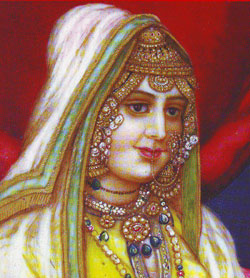
Married 1786 to Mehtab Kaur
Married to Mehtab Kaur
Married to Moran
Married to Gul Bahar Begum
Married 1811 to Daya Kaur
Married to Chand Kaur
Died: 27 JUN 1839, Lahore
to the right you can see his children with his two wifes. 'Bamba Sofia Jindan Duleep Singh' was the last of his family (she might have some children, but they are not considered royalty, these guys..also Duleep were 'un-official' Maharaja of Punjab or something). Bamba died in Lahore...i think she also took part in building up a huge Sikh library at Khalsa College Amritsar..if i am not mistaken. :T:
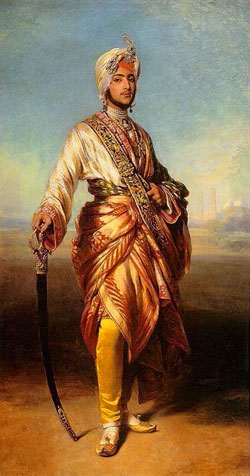
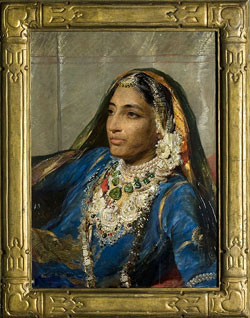
1802 proved to be an auspicious year for the Maharaja. His Rani Raj Kaur, daughter of Nakai Sardar Khazan Singh gave birth to a son. He was named Kharak Singh. The happy event was celebrated with great rejoicing.
Valuable khillats were bestowed on sardars of the darbar and each soldier in Army was presented with a gold necklace. A large amount was distributed among poor.
Shalimar Gardens at Lahore, Lahore was the capital city of Maharaja Ranjit Singh's Sarkar Khalsa. These Gardens were built by Jahangir the Fourth emperor of Mughals.
When the celebrations were over, the Maharaja along with his ally, Fateh Singh Ahluwalia marched on to Daska. The fort was seized and the in charge fled in fear. A police post was set up in this fort and victorious Maharaja returned to Lahore. Now a message was received from Pindi Bhatian that Jassa Singh Bhangi was committing excesses on the local zamindars. He held the Chiniot fort. The Maharaja reached there with his army. Some resistance was offered but the fort fell to Ranjit Singh's army.
However, all was not quiet. The Pathan Chief of Kasur, Nizam-Ud-Din created fresh trouble. He had collected a large force of Afghans and plundered few villages under the Maharaja and was making further preparations to create more trouble. The Maharaja was enraged. He directed Fateh singh Ahluwalia to proceed to Kasur's the Nawab had brooken the terms of the treaty. Ranjit Singh himself followed along with his troops. The Nawab offered stout resistance as he was well prepared. A fierce battle ensued. The Sikhs showed their valor under the command of their able generals. The Pathans entered the fort as they were unable to fight the Sikh army in open. Many were slain. At last fort was seized and remaining soldiers were put to death. The Nawab surrendered with humility. He was forgiven, reinstated and he promised to remain submissive. He paid huge sum of money as Nazrana and was also made to pay for the war reparations. This Nazrana money was distributed among the poor and the needy to celebrate victory.
Then after a brief spell, Maharaja marched into Jullundur Doab. He annexed several places on the way. He also seized Phagwara and gave this town to Fateh Singh Ahluwalia. Then Maharaja visited Kapurthala and there he came to know that Sansar Chand of Kangra had entered Bijwara and Hoshiarpur. The Maharaja hastened back, turned out Raja Sansar Chand and established army posts at these two places.
By this time Ranjit Singh had become a great force. While returning from hills Maharaja Subdued old Sikh chiefs and sardars, Tara Singh Gheba, Dharam Singh of Amritsar and Budh Sing of Faizullapur.
Nautch Girls.
And now came the engagement of his son Kharak Singh to Chand Kaur, daughter of Jaimul Singh of Kanhaiya misal. There were rejoicing throughout the kingdom. Celebrations continued for several days. Nautch parties were arranged and money was spent lavishly. In one such parties, the Maharaja fell in love with a very beautiful Muslim dancing girl, Moran, whom he ultimately married. She had a great influence over Maharaja and money was coined the inscription of More peacock on it in commemoration of the marriage. The Maharaja performed pilgrimage to Hardwar, accompanied with Moran. Chand Kaur gave birth to Naunihal Singh, Maharaja's grandson. Prince Naunihal Singh, Maharaja's Grandson
However, this marriage with Moran raised a storm in the kingdom. Sikh public opinion received a rude shock. The Maharaja was summoned to the Akal Takht. The Maharaja sought forgiveness with all humility. He offered gifts to the panj pyaras, under whose orders he was called. They pronounced punishment which Maharaja gladly accepted. He was to be flogged publicly. Panj Pyaras were gratified at the submission of the Maharaja and took a lenient view and accepted a fine of RS. 1,25,000 from the Maharaja.
Moran's influence over the Maharaja remained only for a short while. The Maharaja sent Moran away to Pathankote, where she spent many years of her life in peace.
The maharaja established a secular state in which all the subjects, Hindus, Muslims and Sikhs were treated alike. Many talented Hindus and Muslims joined his service and the Maharaja gladly participated in the religious festivals of all the communities. Festivals like Dussehra, Diwali, Holi, Basant were celebrated with splendor and gaiety. The Maharaja participated in them along with his subjects and on the occasions of Amavas and Baisakhi took a dip into the holy tank at Amritsar. By his secular outlook, the Maharaja earned great respect from his subjects and also their loyalty.

